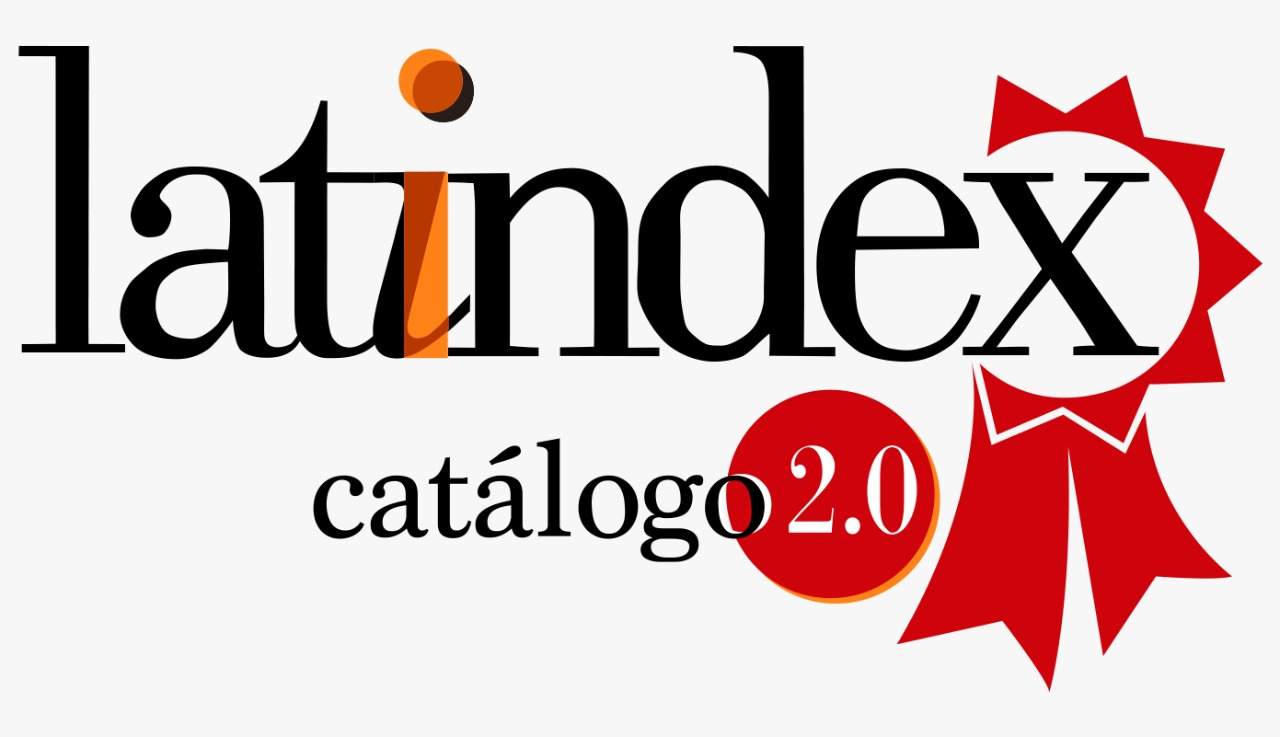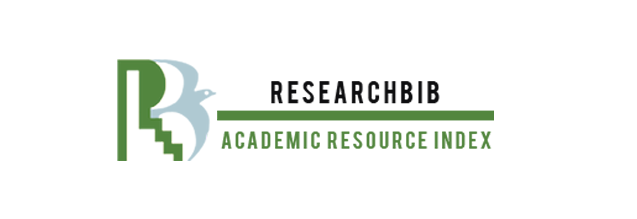Principais Objetivos de Desenvolvimento Sustentáveis aplicados à Aquicultura
Resumo
A aquicultura baseada em práticas ecologicamente corretas é a melhor alternativa para a construção de um mundo melhor no que se refere à produção de alimentos de origem animal. Os 17 Objetivos de Desenvolvimento Sustentável (ODS) da ONU reforçam e direcionam essa nova forma de agricultura. Cientistas e agricultores estão preocupados em manter estoques e fontes de recursos naturais para as próximas gerações, bem como com a manutenção da vida na Terra. Nessa perspectiva, este trabalho reúne os 17 principais ODS em torno da Aquicultura e apresenta de forma resumida como podemos aplicá-los para tornar a aquicultura melhor, mais sustentável e produtiva.
Downloads
Referências
ALMEIDA, E.O. et al. Polyculture of curimatã pacu and freshwater prawn. Boletim do Instituto da Pesca, v. 41, n. 2, p.271-278, 2015.
AVNIMELECH, Y. Carbon/nitrogen ratio as a control element in aquaculture systems. Aquaculture, v. 176, p. 227-235, 1999. DOI: https://doi.org/10.1016/S0044-8486(99)00085-X
AVNIMELECH, Y. Feeding with microbial flocs by tilapia in minimal discharge bio-flocs technology ponds. Aquaculture, v. 264, p. 140-147, 2007. DOI: https://doi.org/10.1016/j.aquaculture.2006.11.025
BALDISSEROTTO, B.; RADÜNZ-NETO, J. Criação de jundiá. Ed. UFSM, Santa Maria, RS. 390 p, 2004.
BEAL, C. M. et al. Marine microalgae commercial production improves sustainability of global fisheries and aquaculture. Scientific Reports, v. 8, 15064, 2018. https://doi.org/10.1038/s41598-018-33504-w. DOI: https://doi.org/10.1038/s41598-018-33504-w
BÉNÉ, C. et al. Contribution of Fisheries and Aquaculture to Food Security and Poverty Reduction: Assessing the Current Evidence. World Development, v. 79, p. 177-196, 2016. Doi: https://doi.org/10.1016/j.worlddev.2015.11.007. DOI: https://doi.org/10.1016/j.worlddev.2015.11.007
BORGES, B. A. A. et al. Integrated culture of white shrimp Litopenaeus vannamei and mullet Mugil liza on biofloc technology: Zootechnical performance, sludge generation, and Vibrio spp. Reduction. Aquaculture, v. 524, p. 735234, 2020. DOI: https://doi.org/10.1016/j.aquaculture.2020.735234
BOSMA, R. H. et al. Gender action plans in the aquaculture value chain: what‘s missing?. Reviews in Aquaculture, v. 11, n. 4, p. 1297-1307, 2019. Doi https://doi.org/10.1111/raq.12293. DOI: https://doi.org/10.1111/raq.12293
BRUGERE, C. and WILLIAMS, M. Women in aquaculture profile. 2017. Available at: https://genderaquafish.org/portfolio/women-in-aquaculture/. Accessed May 2021.
CARDOSO, A. P. et al. Cultivo de alface (Lactuca sativa L. var. “crespa palmas”) em aquaponia com bioflocos e hidroponia. Anais… IX SICIT. 2020.
CAVALLI, L. S.; BRITO, K. C.; BRITO, B. G. One Health, One Aquaculture – Aquaculture under One Health Umbrella. Journal of Marine Biology and Aquaculture, v. 1, p. 1-2, 2015. DOI: https://doi.org/10.15436/2381-0750.15.005
CAVALLI, L. S.; MARQUES, F. B.; WATTERSON, A. Aquaculture occupational safety and health in Brazil. Perspectives in Agriculture, Veterinary Science, Nutrition and Natural Resources, v. 14, p. 1-9, 2019. DOI: https://doi.org/10.1079/PAVSNNR201914047
CAVALLI, L. S.; MARQUES, F. B.; WATTERSON, A. Latin America and Caribbean Profile on Aquaculture Occupational Safety and Health. 1. ed. Columbia, SC: Amazon, 2020. ISBN 9781657217089.
CHOI, D. G. et al. Replacement of fish meal with two fermented soybean meals in diets for rainbow trout (Oncorhynchus mykiss). Aquaculture Nutrition, 2020. DOI: https://doi.org/10.1111/anu.12965. DOI: https://doi.org/10.1111/anu.12965
CONRAD, P. A.; MEEK, L. A.; DUMIT, J. Operationalizing a One Health approach to global health challenges. Comparative Immunology, Microbiology and Infectious Diseases, v. 36, n. 3, 211-216, 2013. DOI: https://doi.org/10.1016/j.cimid.2013.03.006
DUARTE, C. M. et al. 2017. Can Seaweed Farming Play a Role in Climate Change Mitigation and Adaptation? Frontiers of Marine Science, 4:100. Doi: https://doi.org/10.3389/fmars.2017.00100. DOI: https://doi.org/10.3389/fmars.2017.00100
FANTINI, L. E. et al. Evaluating resting time before slaughter on surubim fillet quality. Global Aquaculture Alliance, 2020. Available at: https://www.aquaculturealliance.org/advocate/topic/surubim/. Acessed 10 Jan 2021.
FAO [Food and Agriculture Organization of the United Nations]. The State of World Fisheries and Aquaculture – Opportunities and Challenges, 2014.
FAO [Agriculture Organization of the United Nations]. Fishery and Aquaculture Statistics Yearbook. 2016. (Food and Agriculture Organization of the UN, 2016).
FAO [Agriculture Organization of the United Nations]. En rol de la Mujer en la Pesca y la Acuicultura en Chile, Colombia, Paraguay y Perú. 38pp. 2016b (Food and Agriculture Organization of the UN, 2016).
FAO [Agriculture Organization of the United Nations]. El estado mundial de la pesca y la acuicultura 2016. Contribución a la seguridad alimentaria y la nutrición para todos. Roma. 224 pp. 2016c.
FAO [Agriculture Organization of the United Nations]. Aquaculture, the Sustainable Development Goals (SDGS)/AGENDA 2030 and FAO’S common vision for sustainable food and agriculture. 2017. Available at: http://www.fao.org/cofi/30794-011acfda6d140b8ede06f0b184c8e5fd4.pdf. Acessed 10 Jan 2020.
FAO [Agriculture Organization of the United Nations]. The 2030 Agenda and the Sustainable Development Goals: The challenge for aquaculture development and management. 2017b. Available at: http://www.fao.org/cofi/38663-0a3e5c407f3fb23a0e1a3a4fa62d7420c.pdf (FAO 2017b). Acessed 10 Jan 2020.
FAO [Agriculture Organization of the United Nations]. The state of world fisheries and aquaculture 2018—Meeting the sustainable development goals. 2018.
FAO and ILO. 2013. Guía para hacer frente al trabajo infantil en la pesca y la acuicultura. 101pp. Available at: http://www.fao.org/docrep/019/i3318s/i3318s.pdf. Accessed Jan 2020.
FERRI, L. S.; ROCHA, W. S.; BRAZ FILHO, M. S. P. Tendências e tecnologias sustentáveis na aquicultura: recirculação, aquaponia e bioflocos. Incaper em Revista, v.9, p. 66-78, 2018.
FROEHLICH, H. E.; GENTRY, R. R.; HALPERN, B. S. Conservation aquaculture: Shifting the narrative and paradigm of aquaculture's role in resource management. Biological Conservation, v. 215, p. 162-168, 2017. DOI: https://doi.org/10.1016/j.biocon.2017.09.012
GOMES, L. C. et al. Effect of stocking density on water quality, survival, and growth of larvae of the matrinxã, Brycon cephalus (Characidae), in ponds. Aquaculture, v. 183, n. 1, p. 73-81, 2020. DOI: https://doi.org/10.1016/S0044-8486(99)00288-4
HOLANDA, M. et al. Evidence of total suspended solids control by Mugil liza reared in an integrated system with pacific white shrimp Litopenaeus vannamei using biofloc technology. Aquaculture Reports, v. 18, P.100479, 2020. DOI: https://doi.org/10.1016/j.aqrep.2020.100479
HUA, K. et al. The Future of Aquatic Protein: Implications for Protein Sources in Aquaculture Diets. One Earth, v. 1, 2019. DOI: https://doi.org/10.1016/j.oneear.2019.10.018
IDO, A. et al. Replacement of fish meal by defatted yellow mealworm (Tenebrio molitor) larvae in diet improves growth performance and disease resistance in red seabream (Pargus major). Animals, v. 9, n. 3, p. 100, 2019. DOI: https://doi.org/10.3390/ani9030100
ILO. Agenda Nacional de Trabalho Decente. 19pp, 2006. Available at: http://www.ilo.org/wcmsp5/groups/public/---americas/---ro-lima/---ilo-brasilia/documents/publication/ wcms_ 226229.pdf. Accessed 10 Jan 2021.
ILO. Thematic Labour Overview 3: Working in Rural Areas in the 21st Century. Reality and Prospects of Rural Employment in Latin America and the Caribbean (Revised version). Lima: ILO / Regional Office for Latin America and the Caribbean, 96pp. 2016.
ILO. International Labor Organization. 2018. Available from: URL: http://www.ilo.org/global/lang--en/index.htm. Accessed 10 Jan 2021.
LI, Y. et al. Total replacement of fish meal with black soldier fly (Hermetia illucens) larvae meal does not compromise the gut health of Atlantic salmon (Salmo salar). Aquaculture, v. 520, p. 734967, 2020. DOI: https://doi.org/10.1016/j.aquaculture.2020.734967
LUBROTH, J. FAO and the One Health Approach. Current topics in microbiology and immunology, v. 366, p. 65-72, 2013. DOI: https://doi.org/10.1007/978-3-662-45791-7_262
MARQUES, F. B. et al. The women´s blue revolution - Gender equality in Aquaculture. Pesquisa Agropecuária Gaúcha, v. 24, n. 1/2, p. 32-36, 2018. DOI: https://doi.org/10.36812/pag.2018241/232-36
MARQUES, F. B. et al. Overview of Brazilian aquaculture production. Aquaculture Research, v. 00, p. 1–8, 2020. Doi: https://doi.org/10.1111/are.14828. DOI: https://doi.org/10.1111/are.14828
MARTINELLI, S. G. et al. Densidade de estocagem e frequência alimentar no cultivo de jundiá em tanques rede. Pesquisa Agropecuária Brasileira, v. 48, n. 8, p. 871-877, 2013. Doi: https://doi.org/10.1590/S0100-204X2013000800009. DOI: https://doi.org/10.1590/S0100-204X2013000800009
MOSCHA, S. S. A Review of Aquaculture Production in Tanzania; Recent Status, Challenges and Opportunities, and Its Impact in Poverty Alleviation. Sumerianz Journal of Agriculture and Veterinary, v. 3, n. 8, p. 107-115, 2020. DOI: https://doi.org/10.47752/sjav.38.107.115
NAYLOR, R.; BURKE, M. AQUACULTURE AND OCEAN RESOURCES: Raising Tigers of the Sea. Annual Review of Environment and Resources, v. 30, p. 185-218, 2005. Doi: https://doi.org/10.1146/annurev.energy.30.081804.121034. DOI: https://doi.org/10.1146/annurev.energy.30.081804.121034
OLIVEIRA, P. K. et al. Desafios para carcinicultura no Sul do Brasil. Revista da ABCC, v. 17,n. 2, p. 58, 2015.
PEIXEBR [ASSOCIAÇÃO BRASILEIRA DA PISCICULTURA]. Anuário PEIXEBR. da Piscicultura 2020. 2020. Available from: https://peixebr.com.br/anuario-2020. Accessed 10 Jan 2021.
POLI, M. A.; SCHVEITZER, R.; NUNER, A. P. O. The use of biofloc technology in a South American catfish (Rhamdia quelen) hatchery: Effect of suspended solids in the performance of larvae. Aquacultural Engineering, v. 66, p. 17-21, 2015. DOI: https://doi.org/10.1016/j.aquaeng.2015.01.004
RABINOWITZ, P. M. et al. Toward Proof of Concept of a One Health Approach to Disease Prediction and Control. Emergent Infectious Disease, v. 19, n. 12, p. 130265, 2013. DOI: https://doi.org/10.3201/eid1912.130265
RAHIMNEJAD, S. et al. Replacement of fish meal with Bacillus pumillus SE5 and Pseudozyma aphidis ZR1 fermented soybean meal in diets for Japanese seabass (Lateolabrax japonicus). Fish & Shellfish Immunology, v. 84, p. 987-997, 2019. DOI: https://doi.org/10.1016/j.fsi.2018.11.009
REIS NETO, R. V. et al. Performance of tambacu hybrid (♂Piaractus mesopotamicus x ♀Colossoma macropomum) and its parental pacu (Piaractus mesopotamicus) evaluated in cages under different feeding programmes. Aquaculture Reports, v. 17, p. 100355, 2020. DOI: https://doi.org/10.1016/j.aqrep.2020.100355
ROSALEM, V.; NAGATA, M. Lugar de mulher é na Aquicultura! Panorama da Aquicultura, vol.28, p.50-57, 2018.
ROSAS, V. T. et al. Fish oil and meal replacement in mullet (Mugil liza) diet with Spirulina (Arthrospira platensis) and linseed oil. Comparative Biochemistry and Physiology Part C: Toxicology & Pharmacology, v. 218, p. 46-54, 2019. DOI: https://doi.org/10.1016/j.cbpc.2018.12.009
RAKOCY, J. E. et al. Recirculating aquaculture tank production systems: aquaponics— integrating fish and plant culture. Southern Regional Aquaculture Center Publication, v. 454, p. 1-16, 2006.
ROCHA, A. F. et al. Lettuce production in aquaponic and biofloc systems with silver catfish Rhamdia quelen. Boletim do Instituto de Pesca, v. 44, p. 64-73, 2017. DOI: https://doi.org/10.20950/1678-2305.2017.64.73
ROCHA, A. F. et al. Formação de bioflocos na criação de juvenis de tainha Mugil cf. hospes sem renovação de água. Atlântica, v. 34, n. 1, p. 63-74, 2012. DOI: https://doi.org/10.5088/atl.2012.34.1.63
SAINT-PAUL, U. Native fish species boosting Brazilian´s aquaculture development. Acta Fish. Acta of Fisheries and Aquatic Resources, v. 5, n. 1, p. 1-9, 2017. Doi: https://doi.org/10.2312/ActaFish.2017.5.1.1-9.
SHAO, J. et al. Partial replacement of fishmeal by fermented soybean meal in diets for juvenile white shrimp (Litopenaeus vannamei). Aquaculture Nutrition, 25(1), 145-153, 2019. DOI: https://doi.org/10.1111/anu.12838
SHEPHERD, C. J.; JACKSON, A. J. Global fishmeal and fish-oil supply: inputs, outputs and markets. Journal of Fish Biology, v. 83, p.1046–1066, 2013. Doi: https://doi.org/10.1111/jfb.12224. DOI: https://doi.org/10.1111/jfb.12224
STENTIFORD, G. D. et al. Sustainable aquaculture through the One Health lens. Nature Food, v. 1, p. 468–474, 2020. Doi: https://doi.org/10.1038/s43016-020-0127-5. DOI: https://doi.org/10.1038/s43016-020-0127-5
STEVENSON, J. R.; XAVIER, I. Is aquaculture development an effective tool for poverty alleviation? A review of theory and evidence. Cahiers Agricultures, vol. 18, n. 2-3, p. 292-299, 2009. Doi: https://doi.org/10.1684/agr.2009.0286. DOI: https://doi.org/10.1684/agr.2009.0286
TACON, A. G. Trends in global aquaculture and aquafeed production: 2000–2017. Reviews in Fisheries Science and Aquaculture, v. 28, p. 43–56, 2020. DOI: https://doi.org/10.1080/23308249.2019.1649634
UN Women. United Nations Entity for Gender Equality and the Empowerment of Women. ANNUALREPORT 2012-2013, 32p. 2013. Available at: http://www.unwomen.org/en/digital-library/publications/2013/6/annual-report-2012-2013. Accessed Dec 2020.
UN [United Nations]. Goal 1: End poverty in all its forms everywhere. 2021. Available at: https://www.un.org/sustainabledevelopment/poverty/. Accessed 10 Jan 2021.
VOORHEES, J. M. et al. Bioprocessed soybean meal replacement of fish meal in rainbow trout (Oncorhynchus mykiss) diets, Cogent Food & Agriculture, 5:1, 2019. Doi: https://doi.org/10.1080/23311932.2019.1579482. DOI: https://doi.org/10.1080/23311932.2019.1579482
WASIELESKY Jr., W. et al. Preliminary study of the pink shrimp Farfantepenaeus paulensis in pen enclosures in Patos Lagoon Estuary. Boletim do Instituto de Pesca, v. 30, n. 1, p. 63-70, 2018.
WATTERSON, A. et al. The neglected millions: the global state of aquaculture workers' occupational safety, health and well-being. Occupational and Environmental Medicine, 77(1):15-18, 2019. DOI: https://doi.org/10.1136/oemed-2019-105753
ZANIBONI-FILHO, E.; PEDRON, J. S.; RIBOLLI, J. Oportunidades e desafios para a piscicultura em reservatórios brasileiros: uma revisão. Acta Limnologica Brasiliensia, v. 30, e302, 2018. DOI: https://doi.org/10.1590/s2179-975x12617
Copyright (c) 2021 Pesquisa Agropecuária Gaúcha

This work is licensed under a Creative Commons Attribution-NonCommercial-ShareAlike 4.0 International License.
Os autores declaram que o trabalho não foi publicado anteriormente, nem enviado simultaneamente para publicação em outro periódico e que concordam com a submissão, conteúdo e transferência dos direitos de publicação do artigo em questão para o periódico científico Pesquisa Agropecuária Gaúcha - PAG. Os autores assumem total responsabilidade pela originalidade do artigo, podendo incidir sobre os mesmos, eventuais encargos decorrentes de reivindicação, por parte de terceiros, em relação à autoria do artigo.
A reprodução total dos artigos da Revista em outros meios de comunicação eletrônicos de uso livre é permitida de acordo com a licença Creative Commons Atribuição-NãoComercial-CompartilhaIgual 4.0 Internacional.



















